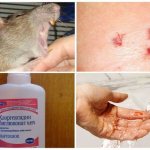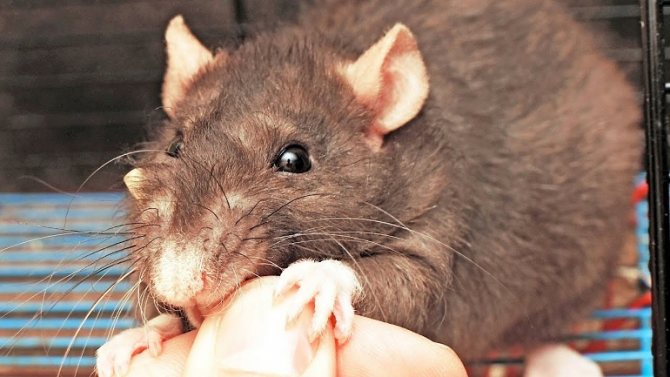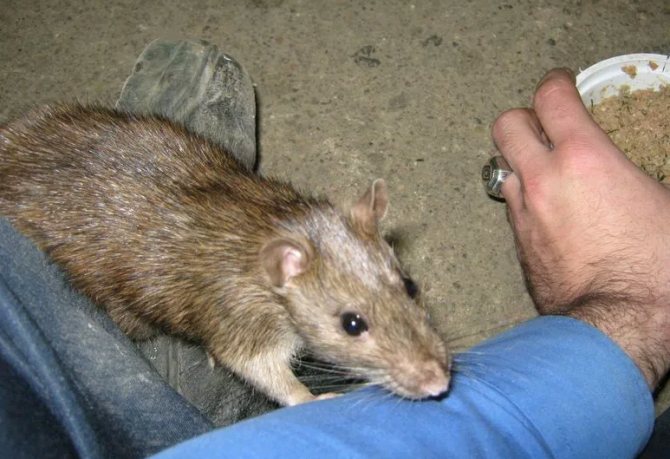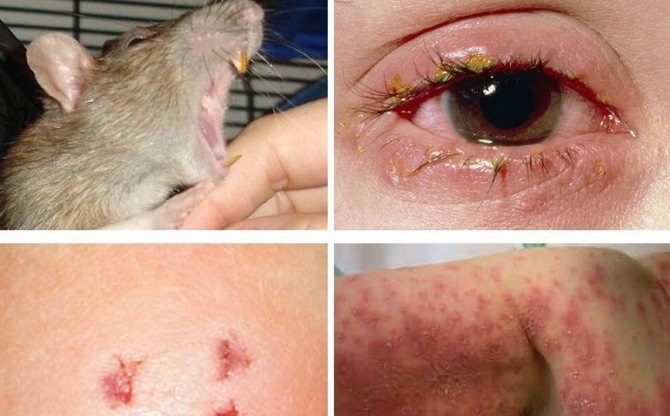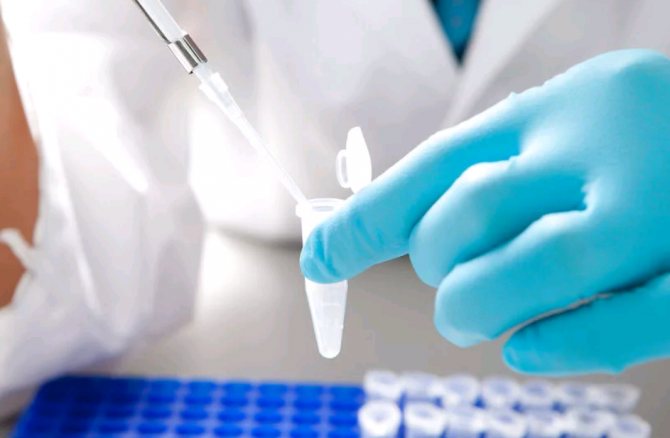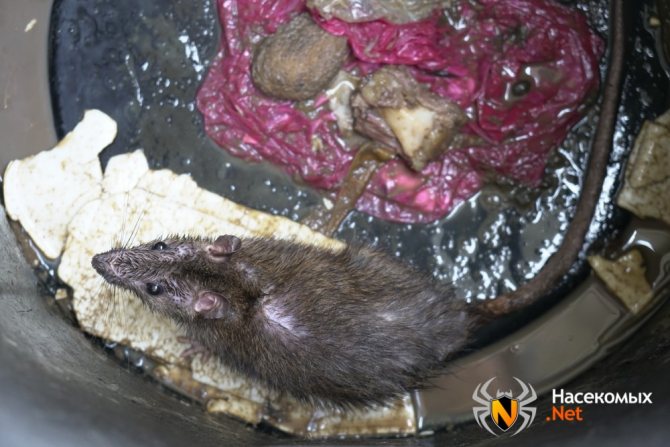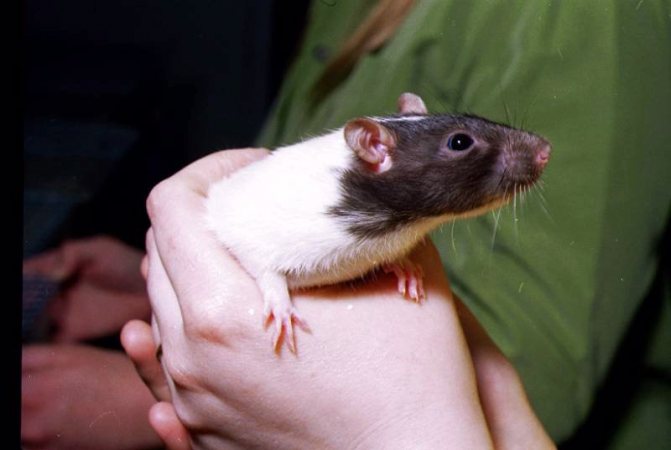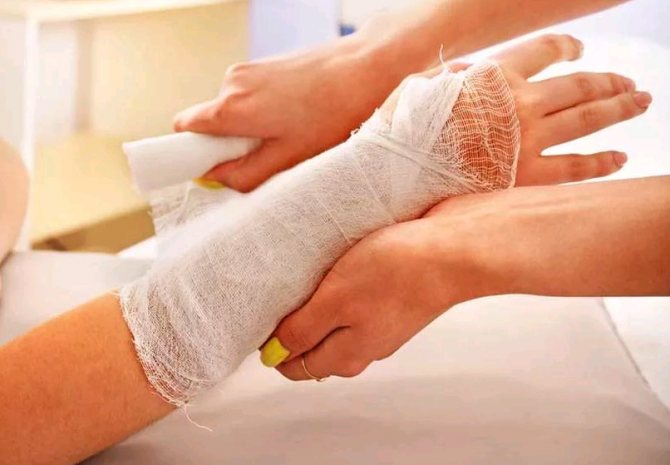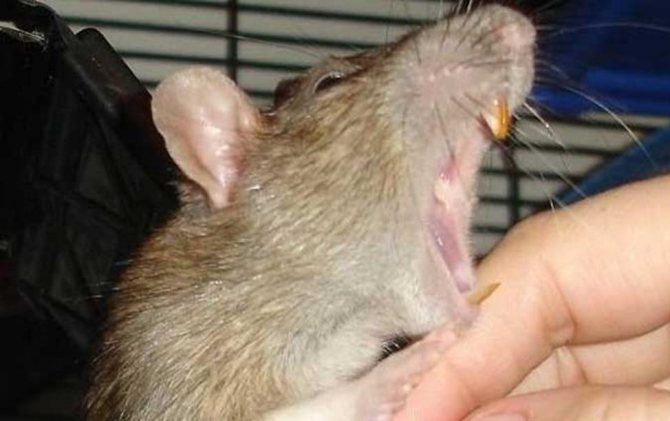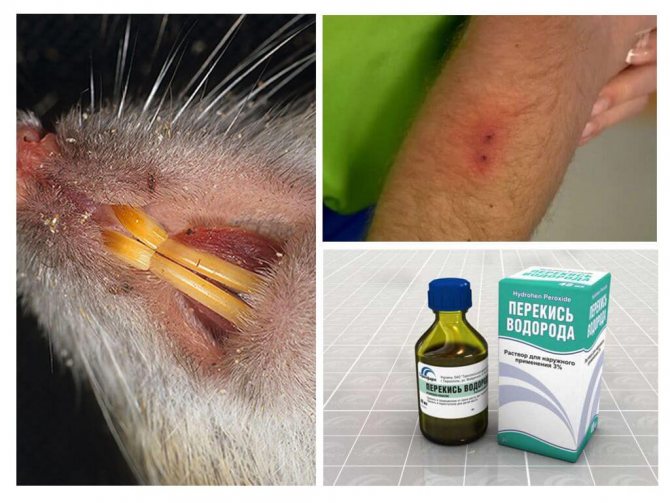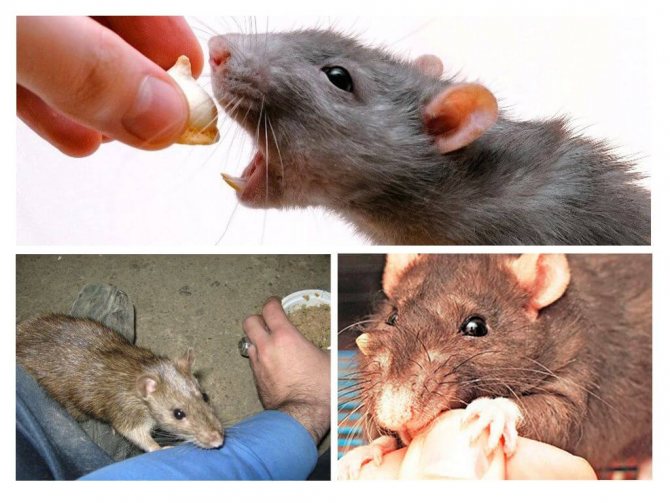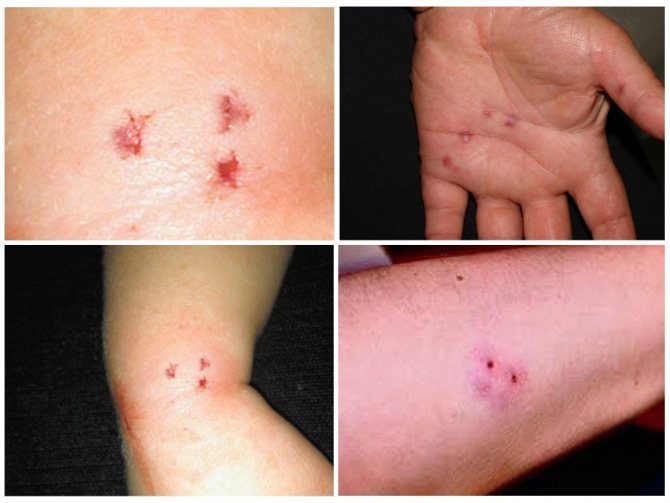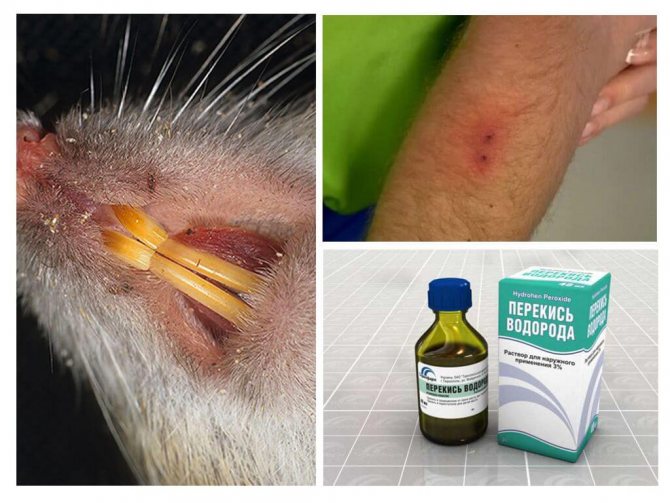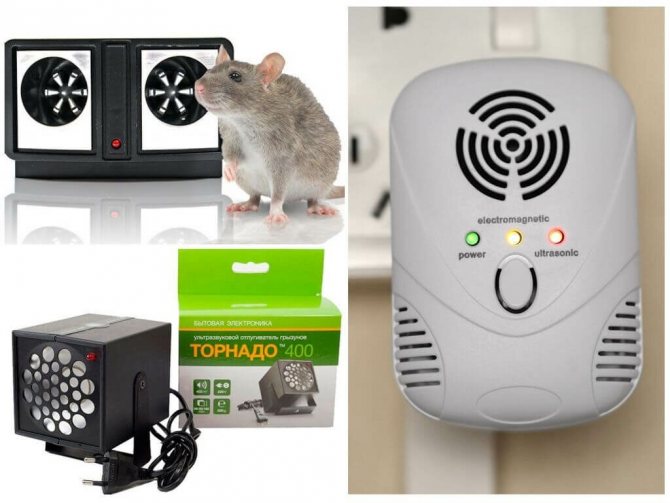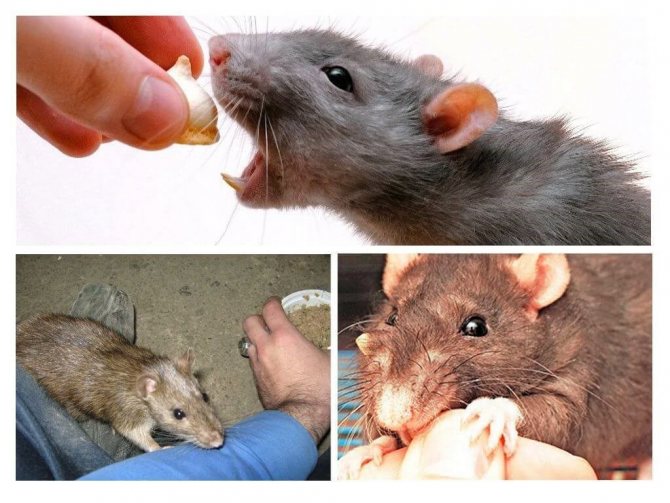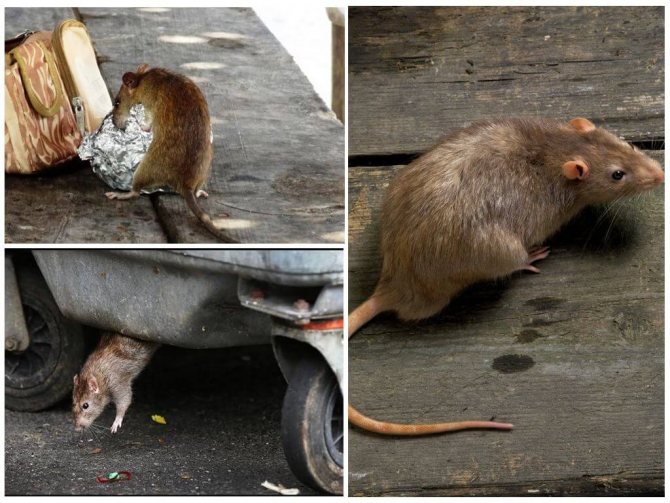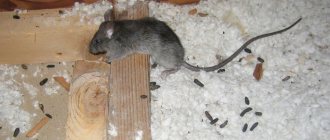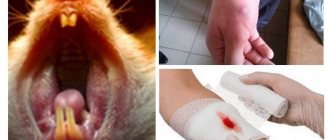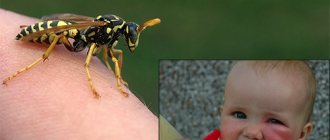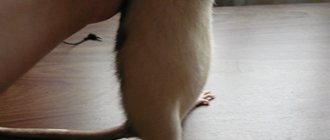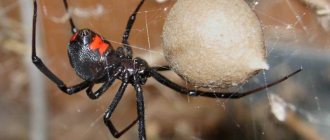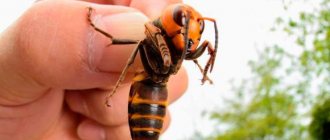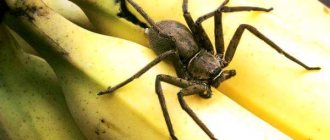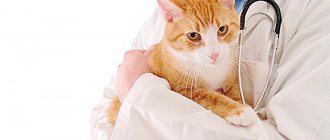Domestic rats are simple pets that do not pose a lot of problems with good maintenance and proper attention from the owner. Healthy rodents are not aggressive and friendly. Therefore, if a rat has bitten, they do not immediately raise a panic - perhaps this is an isolated incident that occurred due to a number of specific reasons. If the pet bites often, you need to find out what motivates this action and what to do.
What is fever
Ratbite fever is an infectious disease commonly referred to as sodoku. If medical serum is not administered on time, then death occurs in 25% of cases. The difficulty is that the disease belongs to non-specific diseases, which is why it is difficult to diagnose sodoku in time. For the first time, rat fever was registered about 2,000 years ago in India, but it was considered as a medical disease much later. Today, sodoku is most common in countries in Asia, Africa and Latin America, where there is an alarming number of poor and polluted neighborhoods teeming with sick rodents. And it is extremely difficult to fight rats due to their rapid reproduction. The only way is to avoid meeting them.
Cases of attacks on people
According to statistics, the number of cases of rat attacks on humans is quite large. So, in a big city, where the number of rats often exceeds the number of inhabitants, 400-700 human bites by rodents occur annually. That is why it is so important to get rid of the rats.
On a note!
According to statistics, in the United States, up to 14 thousand people suffer from rat bites annually, and in the world this figure exceeds 3.5 million. Every year, due to diseases transmitted by rats, 2 thousand people die.
Many are interested in the answer to the question of whether a rat can attack a person on its own, without any reason. Indeed, on the Internet, videos have even been posted with an example of such aggression by rodents.
What does a rat bite look like?
The rat's teeth are sharp and long, they constantly sharpen them on sharp objects, such as brick and concrete, so it is not difficult to bite through the soft skin. They bite with powerful incisors, leaving deep and bleeding marks. By itself, she does not attack, only in a moment of danger or aggression, especially if she is infected with rabies.
Most often this happens in landfills and in places where garbage accumulates, as well as in basements, in favorite habitats. Therefore, it is important, when you see her, not to provoke her and not to scare her away with a stick. The fact that she is going to attack is indicated by her posture: the animal stands on its hind legs, emits a squeak and rushes to "the enemy". What does a rat bite look like?
Bleeding punctures remain on the skin, and most often these are the limbs. But the most dangerous places for a bite are the neck, face and torso.
Bite Fever Symptoms
After a rat bite, the symptoms of sodoku do not appear immediately, they appear both on the third and on the thirtieth day, depending on the body's resistance. Even if wound healing (incubation period) goes well, signs of the disease will appear one way or another. Do not panic, it only says that the body is fighting. What are the main symptoms after a rat bite:
- The wound becomes painful and denser, a swelling forms around,
- The patient shivers, the body temperature rises, the pulse quickens,
- Headaches appear, sweating intensifies, weakness torments,
- Possible joint pain, rash on the body, tremors, nausea and vomiting.
During the entire treatment period, these symptoms either subside or reactivate. Do not consider the first improvement in the condition as a sign of recovery, as it goes through several stages before the person is fully recovered. Without medical care, the illness will last much longer, while therapeutic intervention will get rid of the fever much faster.
First aid for a bite
What to do if bitten by a rat. With such an injury, in no case should you panic, and the first thing to do is to treat the wound. To do this, you will need the tools that can be found in every home medicine cabinet:
- Prepare a solution of warm water and laundry soap at a ratio of one-third of a bar to two glasses of water. Rinse the wound with this soapy solution for at least ten minutes - the alkali neutralizes the action of harmful bacteria.
- Next, disinfect the bite site with chlorhexidine, hydrogen peroxide or ordinary alcohol, and burn the edges of the wound with iodine (it is advisable not to use brilliant green). After that, bandage the bitten area, but not tightly.
- Take an antibiotic drug, such as a tetracycline tablet, to prevent the disease from developing. This will help slow the spread of the infection in the body. Then you urgently need to see a doctor.
A visit to a doctor after a rat bite is strictly necessary in order to get a tetanus and rabies vaccine, in this case you cannot do without vaccination. During the entire incubation period, it is important to monitor your condition and observe the symptoms that appear.
What infections are carried by rats
Rodents eat everything that comes across: garbage, stale and rotten waste, rat droppings. Therefore, in their mouths, the composition of the microflora has a very wide spectrum: harmful bacteria, viruses that can cause inflammation in the most optimistic case, and in the worst case, a rat can be a carrier of infectious diseases. Rat bites due to the characteristic deep wound in 90% of cases cause its inflammation and the appearance of a purulent process.
Rodents are carriers of many infectious diseases, some of which are deadly. Therefore, it is so important to do an urgent disinfection of the wounds when bitten by a rat and as soon as possible consult a doctor for help.
On a note!
According to statistics, more than 15 thousand people annually feel the consequences of rat bites in the world, of which 100 cases are fatal.
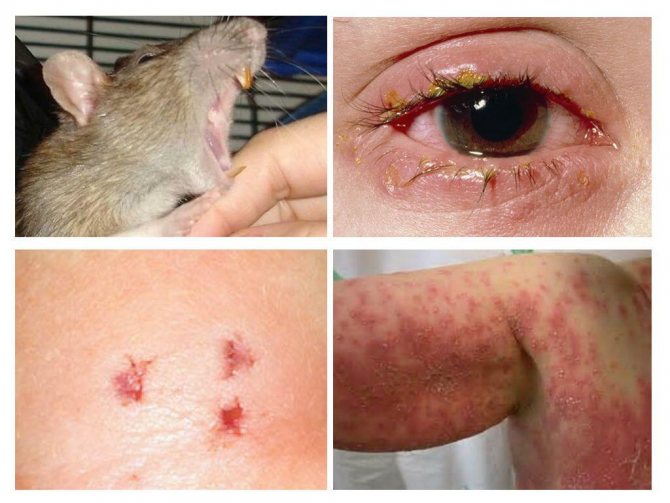
Diseases from rats
What are the dangerous diseases spread by rodents and what is the danger of a rat bite:
- Leptospirosis is a serious disease caused by bacteria of the genus Leptospira, as a result of which internal organs (liver, kidneys) and the nervous system become infected. The likely mortality rate is 16% of diseased patients. Its symptoms: high fever up to 40 ºС, chills and headaches, after 2 days there is an enlargement of the liver, accompanied by severe pain in the calves on the legs.
- Listeriosis - pathogens are the pathogenic bacteria listeria, the disease is very dangerous for pregnant women, because can cause miscarriage, most of all affects people with reduced immunity.
- Toxoplasmosis - an infection caused by toxoplasma, is dangerous for pregnant women due to the possible damage to the fetus with a 40% probability.
- Yersiniosis is an infectious disease that causes damage to the gastrointestinal tract and severe intoxication, incl. affects the musculoskeletal system and liver. The disease often manifests itself within 3-7 days, sometimes after 18 days, with the following symptoms: fever up to 40 ºС, pain in muscles and joints, head and abdomen, nausea and diarrhea.
- Cryptosporidiosis - the disease is caused by coccidia and affects the stomach and gastrointestinal tract. Symptoms: severe diarrhea for several days, sometimes up to 1 month, abdominal pain.
- Syphaziasis is a helminth disease in rodents.
- Q fever is an infection, when affected, a person develops symptoms: general weakness, joint and muscle pain, dry cough, impaired appetite and sleep, headache.
Important!
In addition, viruses from such dangerous diseases as tetanus and rabies can be found in the saliva that rats secrete when bitten. The salvation from infections can be an appeal to doctors within a few hours and the introduction of a special serum. Rabies and tetanus are deadly diseases for humans.
Bite Fever Treatment
In addition to a special medical serum against rat bites, the victim is prescribed injections of Penicillin, an antibiotic that is administered intramuscularly. The course of treatment is from seven to ten days. Patients who are allergic to this drug are prescribed analogues - Streptomycin or Chloramphenicol (also in the form of injections). If the wound is very serious, the doctor will increase the dosage of the injections to four weeks.
For prophylaxis, in order to avoid negative consequences and complications, the patient takes the drug Tetracycline four times a day for the first five days after the rat bite.
Health hazard
The danger of a rat lies not only in damage to property, destruction of food supplies, rodents spread more than 80 terrible diseases. Rats are found in places that are far from meeting hygienic and sanitary standards.
On a note!
Viruses do not infect animals. Being carriers of dangerous diseases, the animals themselves feel great. The infection is transmitted through a rat bite with saliva, by contact, exhaling with air. Pets are often the intermediaries. They become infected themselves after contact with rodents, infect humans.
If bitten by home decorative
If a domestic rat has bitten it, it is imperative to disinfect the wound. Even if the pet is tame, it is still impossible to exclude the possibility of getting into the wound of an infection, albeit not life-threatening. Most often, the bite of a domestic rat is accompanied by slight swelling and redness of the skin, in very rare cases, an increase in temperature is possible.
Decorative tame rats bite only in exceptional cases, for example: if the female is pregnant (she becomes more aggressive), or if you want to pet the babies, she will feel threatened and will bite. In most cases, bites do not leave negative consequences.
Habitat
The main difference between the two is their habitat.
The gray rat or Pasyuk is a real Sinanthropus, lives only in the immediate vicinity of a person. On land, it inhabits all types of residential and commercial buildings.
Large and stable centers of concentration of rats - meat processing plants, fish processing plants, city markets. In addition, various shops, warehouses, food enterprises located in residential areas are also places of a steadily increased number of rats and centers of their resettlement in neighboring objects.
It is on this example that a distinction can be drawn between "street" and "house" rats. Deterioration of living conditions in the external environment provokes the Pasyukov to look for more comfortable places, that is, living quarters where there is everything necessary for life: food, water, microclimate.
The black rat is also a real Sinanthropus. The main places of its permanent habitat are sea vessels (passenger and fishing) and port facilities. It is characterized by various types of shelters located in the cracks of the stone foundations of the berths, in the cladding of the holds and walls of the premises. Sometimes they can build their holes in the open ground.
Precautions
Rats, especially wild ones, are very dangerous to humans, so the best safety measure is to avoid meeting these rodents. Usually rats are shy and run away from people, and will only make contact if they feel a threat to their lives. It happens that these unpleasant animals run into houses, smelling food, so do whatever is necessary so as not to attract them. What precautions to take:
- Ensure that garbage cans near houses are always closed with lids,
- Do not leave food in the open, remove food debris from the table and from the floor,
- Set indoor traps, rodent repellents,
- Close doors and preferably windows, especially if you live on the ground floor,
- When meeting with a rat, do not make sudden movements and do not wave your arms.
And remember the main thing: under no circumstances try to "make friends" with a rat! Many bites occur precisely because a person wanted to either stroke a rodent or cornered it with a stick. It is very dangerous to do this, since the wild animal immediately senses danger and begins to show aggression. The best way to avoid being attacked by a rat is to spray it with cold water. This will scare the uninvited guest, and she retires. Photo
Unpleasant "surprise" in the toilet
Rats can appear not only in the kitchen. Sometimes you meet them in places where you least expect to see them. So, you can see a rat in the toilet. What to do in this case? The main thing is not to panic. Rats begin to move along sewer pipes only if they are cornered. Such individuals become very aggressive. And your frightened cry can serve as the impetus after which the frightened beast will attack you. When you see a sewer rat, do three things.
- Close the toilet lid. This is necessary so that the rodent cannot pounce on you.
- Press down on the lid with something heavy. The rat is able to jump high, can easily lift the lid.
- Call a dedicated service. The team will carry out deratization, destroying rodents throughout the apartment.
Video on the topic How to get rid of rodents, or Who is the boss
To permanently get rid of rats in a private house, plant an elderberry in the yard. This shrub has a very unpleasant odor for rats. But the root of the plant is considered to be the most effective "rat race". It contains hydrocyanic acid, which is a potent rodent poison. Even very hungry rats never stick their nose into the yard where the elderberry grows.
Rodent control products
There are many devices for scaring away, and the principle of operation is in ultrasonic and electromagnetic waves. Such devices do not kill rodents, but force them to leave the room by acting on the nervous system. What types of scarers exist and what are the differences in work:
- Electronic scarers. The essence of these devices is to distribute magnetic impulses through an electric wire, which is a powerful irritant for rats and mice. The range of these scarers is enough for the area of the entire room.
- Ultrasonic scarers. These devices act on the nervous system of rodents with high-frequency sound vibrations with a change in frequency, due to which the rats do not have time to get used to the ultrasound and quickly flee.
- Combined repellents. These devices combine a double effect on pests: high frequency sound and low range of electromagnetic waves. This variable component does not allow rodents to adapt.
The choice of a particular scarer device depends on a number of factors: the number of rats and mice, the area of residence, the degree of human comfort, etc. Each device has a different radius of action, so choosing a scarer for a particular case will not be difficult.Their undoubted plus is that they quickly drive rodents out of the house.
Ultrasonic Repeller
The most popular today are ultrasonic rodent repellers - devices that are convenient and safe for humans. The effectiveness of each device depends on the correct observance of the instructions and operating conditions, only then there will be a good result. Which ones exactly devices against mice and rats considered the best:
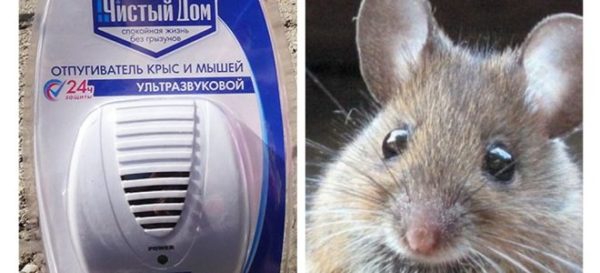

Clean house. The ultrasound of which spreads over an area of up to 150 sq. m. Thanks to signals that are not audible to the human ear, but perfectly audible by rodents, the pests panic and run away.
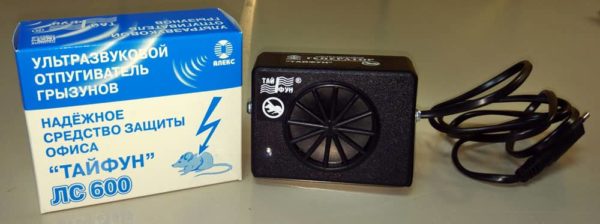

Typhoon. This ultrasonic repeller is used not only at home, in the country, but also in large industrial premises. It operates on an area of up to 220 sq. m. and operates in two modes - silent (for home) and sound (for warehouses).
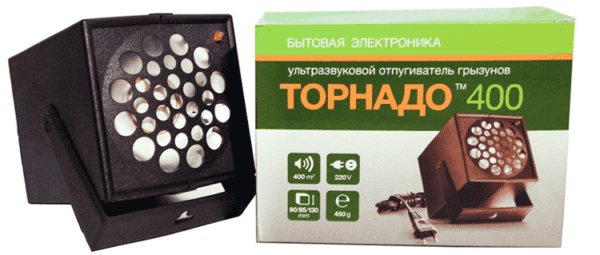

Tornado. Another powerful device for scaring off mice and rats, the radiation area reaches 400 sq. m. Absolutely harmless to people, pets, equipped with an automatic switch of ultrasonic frequencies.
Efficient rodent repellents are distinguished as Grad, ElectroKot, Tsunami, Spectrum, Banzai, Chiston. You should choose a specific device after studying the instructions - this will help you choose the right device for the desired room.

